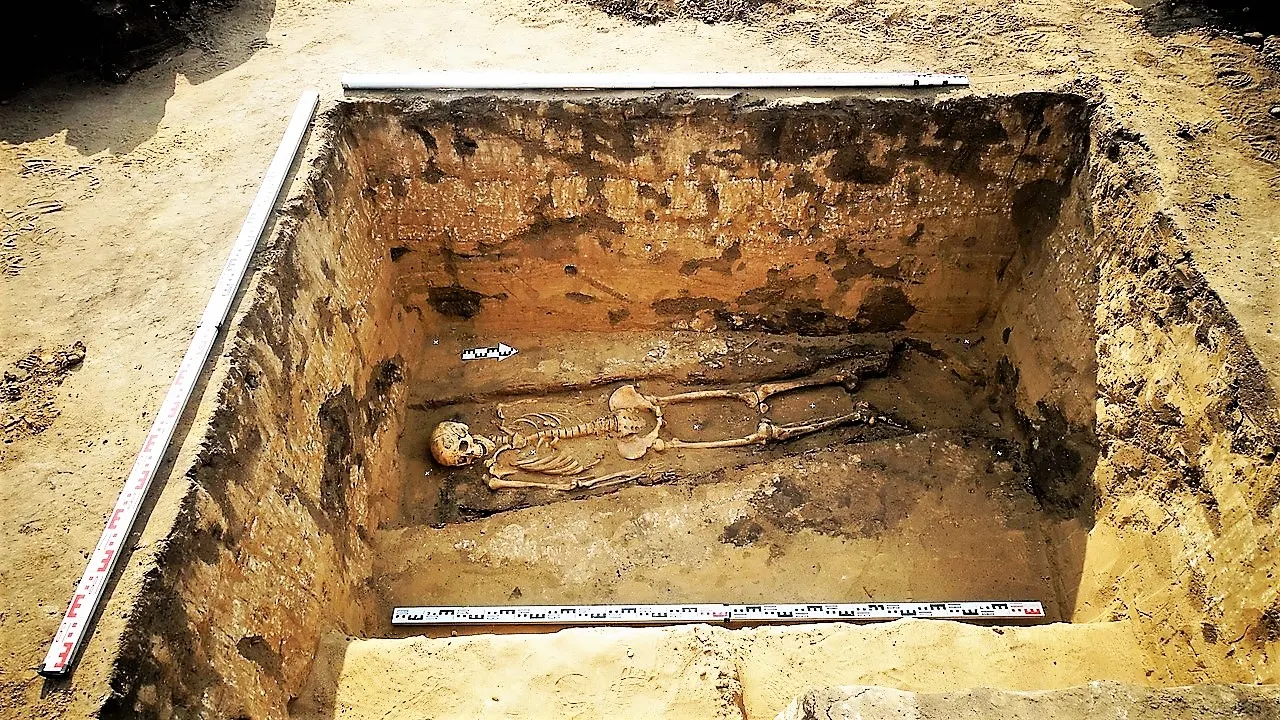Archaeologists discovered a unique burial on the bank of the Alabuga River in the Kurgan region, which dates back to the IV-III centuries BC. This is the only known monument of this period with stone structures in the region. Scientists suggest that this burial may be related to the Sarmatian presence.
Kurgan archaeologists discovered the burial during excavations of the mound Otryad-Alabuga. Excavations were carried out all May and as a result a unique burial was found that dates back to the IV-III centuries BC. The burial is located on the bank of the Alabuga River and is the only known monument of this period with stone structures in the region. Scientists believe that this burial may be related to the Sarmatian presence.
The stone shell of the mound was composed of iron-containing rock with inclusions of fossil mollusk shells. The stone slabs, weighing over 100 kg, were raised by the mound builders from the bottom of the canyon. The burial rites, the orientation, the composition of the altar, the morphology of the mound allow us to date it to the Sarmatian period, namely the IV-III century BC.
The excavated barrow is unique for the region, the nearest analogues are fixed in the south of Chelyabinsk region, in Orenburzhye, Northern Kazakhstan. The investigated monument is currently the only known barrow with stone structures in the Kurgan region.
The burial was in an emergency condition, scientists had time to examine it before it could fall from the cliff into the water. The river had washed out a deep canyon, on the edge of which the ancient tomb was located. Due to erosion, part of the burial mound has already fallen, exposing the stone structures.
The mound had been robbed several times in antiquity – when dismantling the embankment, archaeologists recorded the individual bones of a child thrown out of the burial site. The child’s burial, in turn, had been let into the mound after it had been created. Such a ritual was practiced quite often among nomads and was preserved until the recent past, while the main burial was much deeper.
The field stage of works of archeologists is finished, researches will proceed in laboratory with attraction of profile experts. At the site conducted soil science research, made the necessary excavations, collected samples of wood, in the future studies will also research the found bones to anthropologists and zoologists. The work was organized by the archaeological laboratory of the KSU and the Kurgan regional museum association.
This discovery is an important step in understanding the history of the region and its connection to ancient civilizations. The Kurgan region is rich in archaeological finds, which allow scientists to understand how ancient people lived and died on this territory. This discovery also confirms the significance of the Sarmatian culture and its influence on the region.
